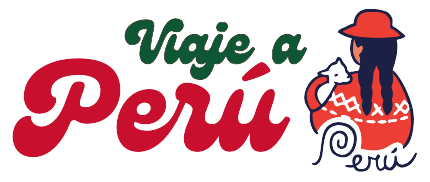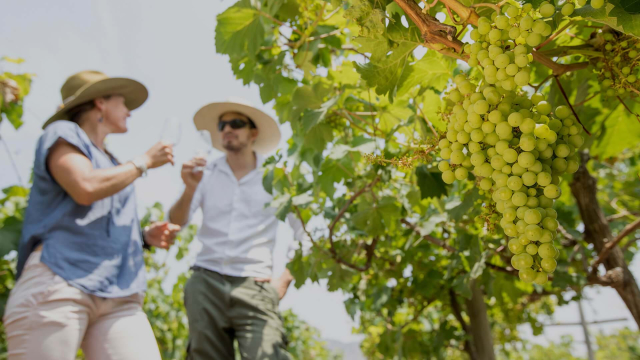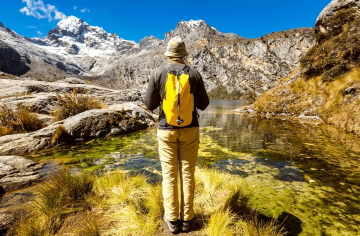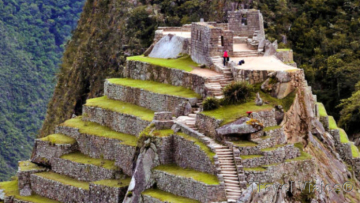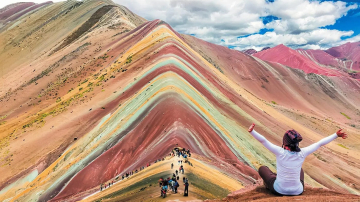Pisco , an emblematic spirit of Peru , is not just a drink ; it is a symbol of cultural identity and tradition . Its history dates back to the 16th century , when Spanish colonizers introduced the grape to the country . Since then, pisco has evolved to become one of the most internationally recognized beverages.
The Pisco Route is an unforgettable experience for wine and spirits lovers. Through wineries and vineyards located mainly in Ica, Moquegua, Lima and Arequipa, you can enjoy not only pisco tastings , but also stunning landscapes and an immersion in Peruvian history and culture.
1. Ica Region: The Heart of Pisco Production
Ica is considered the birthplace of pisco and the most famous region for its wineries. Here, the dry and sunny climate creates perfect conditions for growing grapes such as Quebranta, Negra Criolla and Torontel.
Notable wineries include Tacama , known as the oldest in South America , and El Catador , where you can tour its traditional facilities and enjoy guided tastings . A visit to Ica is not complete without exploring Huacachina, an oasis surrounded by dunes , perfect for combining the pisco experience with adventures such as sandboarding or buggy rides.
2. Moquegua: A Treasure to Discover
Moquegua , although less known than Ica , has a centuries-old pisco tradition. This region stands out for its artisanal production and its ideal climate for the production of fine piscos.
The route includes stops at wineries such as Biondi , famous for its variety of aromatic piscos, and Pisquera Don Camilo , where you can learn about traditional techniques that have remained intact since colonial times. Additionally, Moquegua is an ideal destination for those looking for a quieter and more authentic experience, away from the crowds.
3. Arequipa: Pisco with a Taste of History
Although best known for its gastronomy and colonial architecture, Arequipa is also an emerging pisco destination . The wineries in this region offer a mix of tradition and modernity, with high-quality piscos and tastings designed to highlight their complexity.
A must-see stop is the Majes Tradición Winery , located in the Majes Valley , which offers stunning views and award-winning piscos. You can also combine the route with a visit to the Colca Canyon or the surrounding volcanoes , creating a complete cultural and natural experience.
4. Lima: Pisco in the City
For those who can't venture far, Lima also offers options to explore pisco culture. In the Barranco district, famous for its bohemian atmosphere , you'll find bars and restaurants offering pisco tastings and cocktails like the classic Pisco Sour.
Places such as the Pisco Museum stand out, where you can not only taste different varieties, but also learn about the history and the process of making this drink.
5. Pisco and Gastronomy: A Perfect Alliance
One of the best parts of the Pisco Route is the combination of this drink with Peruvian cuisine. The driest and most robust piscos, such as those made with Quebranta grapes , pair perfectly with dishes like ceviche or lomo saltado. On the other hand, aromatic piscos , such as those made with Italia grapes , are ideal to accompany desserts such as suspiro limeño.
Additionally, many wineries offer paired menus that allow you to enjoy the full gastronomic experience , highlighting the unique flavors of pisco and indigenous Peruvian ingredients.
The Pisco Route is not only a journey through the best vineyards and wineries in Peru, but also an opportunity to learn about the rich history, tradition and diversity of this country . Each pisco region has something unique to offer , from the great producers of Ica to the hidden gems of Moquegua and Arequipa.
Whether you are a pisco lover or someone looking for new cultural experiences , this tour promises to be unforgettable . Prepare your glass and embark on a journey full of flavors, history and unforgettable landscapes.
We invite you to learn more about Peru here: Blogs from Peru.
